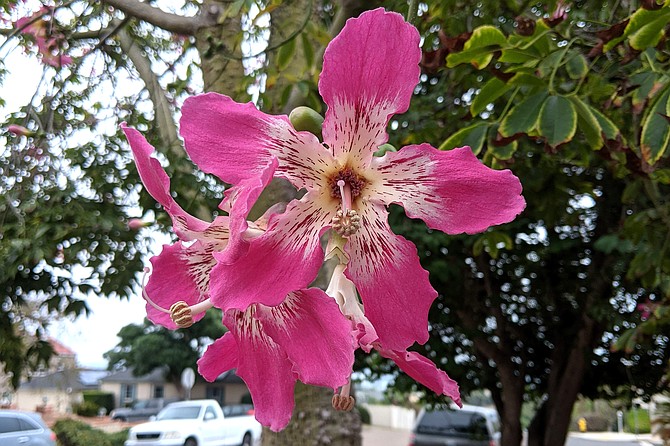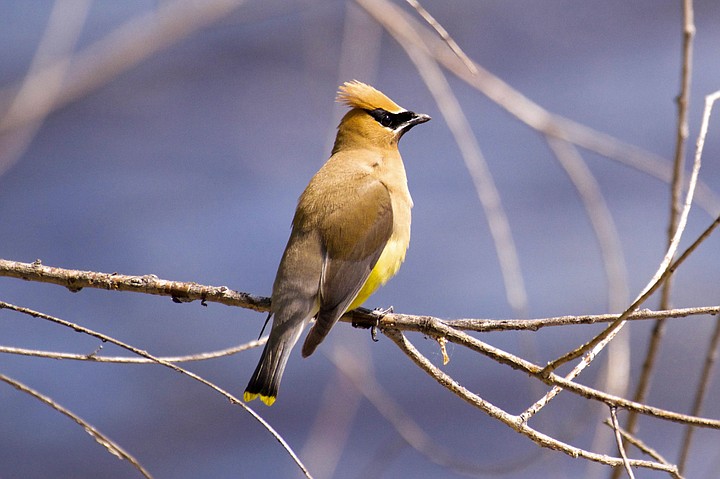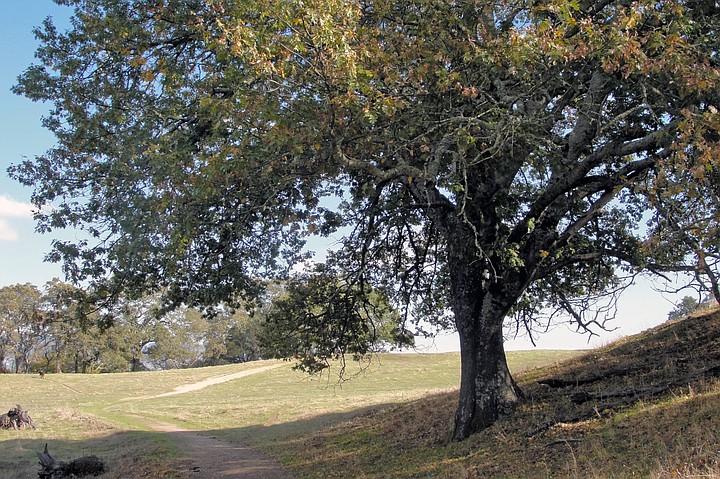 Facebook
Facebook
 X
X
 Instagram
Instagram
 TikTok
TikTok
 Youtube
Youtube

The Floss Silk Tree, a conspicuous “autumn bloomer” here and there around San Diego, has been showing off its pinkish (or purplish) hibiscus-like flowers for at least a month now. The broad, heavy trunks of this South American import, which are studded with fat, cone-shaped spines, makes it easy to identify.


Cedar Waxwings Are Making Their Way to Southern California. Arriving as early as September and hanging out through April, they almost look like they are made of porcelain, with their perfectly crafted feathers. Waxy red droplets may dot the ends of their flight feathers, formed by the wax of the small fruits they consume. Keep an ear open for their high-pitched trills as they flock around the highest branches of trees. Balboa Park is a favorite hangout.

The Tawny Autumnal Hues of the Black Oak Tree are just beginning to highlight the slopes of San Diego County’s higher mountains. Named for the dark coloring of its bark, especially when wet, the black oak is the only deciduous oak native to the county. Often seen in association with pines, firs, cedars, various evergreen oaks, and occasionally chaparral, the black oak lends its true autumn coloring to the Cuyamaca, Laguna, and Palomar mountains.


The Floss Silk Tree, a conspicuous “autumn bloomer” here and there around San Diego, has been showing off its pinkish (or purplish) hibiscus-like flowers for at least a month now. The broad, heavy trunks of this South American import, which are studded with fat, cone-shaped spines, makes it easy to identify.


Cedar Waxwings Are Making Their Way to Southern California. Arriving as early as September and hanging out through April, they almost look like they are made of porcelain, with their perfectly crafted feathers. Waxy red droplets may dot the ends of their flight feathers, formed by the wax of the small fruits they consume. Keep an ear open for their high-pitched trills as they flock around the highest branches of trees. Balboa Park is a favorite hangout.

The Tawny Autumnal Hues of the Black Oak Tree are just beginning to highlight the slopes of San Diego County’s higher mountains. Named for the dark coloring of its bark, especially when wet, the black oak is the only deciduous oak native to the county. Often seen in association with pines, firs, cedars, various evergreen oaks, and occasionally chaparral, the black oak lends its true autumn coloring to the Cuyamaca, Laguna, and Palomar mountains.
Comments